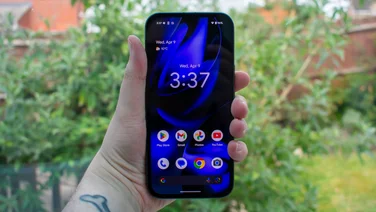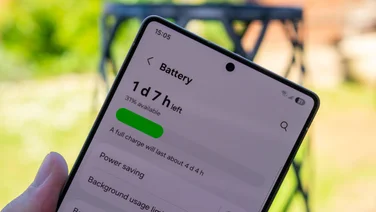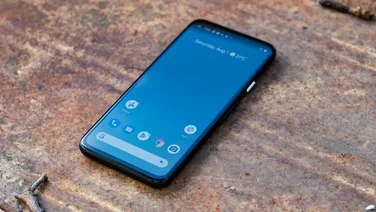To help us provide you with free impartial advice, we may earn a commission if you buy through links on our site. Learn more


















- Significantly cheaper than its rivals
- Camera is better than ever
- Excellent performance
- Shorter battery life than the OnePlus 5T
The speed you need. The focus group that combined those four words to create the OnePlus 6’s vague, unfocused tagline haven’t done the Chinese firms eighth smartphone justice. Suggesting that the OnePlus 6 only offers the processing power thats necessary, and no more, well, that’s underselling it somewhat. Let me explain.
READ NEXT: The best smartphones of the year
In reality, this is OnePlus beefiest smartphone to date. As the first OnePlus phone to be powered by Qualcomms latest (and fastest) Snapdragon 845 processor the same chipset found inside the Samsung Galaxy S9 and Sony Xperia XZ2 the OnePlus 6 reprises a familiar role. Once more, this is a mid-range phone with flagship DNA at its core. This time around, however, there have been a few changes.
OnePlus 6 review: What you need to know
The OnePlus 6 is the firms latest flagship-killing smartphone. Equipped with Qualcomms octa-core 2.8GHz Snapdragon 845 processor rather than the 2.4GHz Snapdragon 835 weve seen previously and a choice of either 6- or 8GB of RAM and three different storage configurations, this phone seeks to join the ranks of other smartphone giants.


















The 19:9 screen, which remains a 2,280 x 1,080 resolution unit, is slightly larger at 6.3in across the diagonal, with a familiar iPhone X-style notch at the top. A dual 16- and 20-megapixel camera arrangement is on the rear, and the phone runs Android 8.1 Oreo from the get-go.
OnePlus 6 review: Price and competition
The OnePlus 6 launches in the UK for £469. This makes it the cheapest Snapdragon 845-equipped phone in the shops: Sonys Xperia XZ2 costs £700, Samsungs Galaxy S9 Plus is £869 and the Huawei P20 Pro our current smartphone favourite is yours for £800.
OnePlus 6 review: Design
So, whats new with the OnePlus 6? Is this a phone youd want to upgrade to from your six-month-old OnePlus 5T? Well, the first thing youll notice, especially if you place both phones next to each other, is that the 6s screen has grown from 6in to 6.3in, which has necessitated a slight increase in the phones size. This might not sound like a drastic difference, but when you factor in the phones increased thickness and weight youre looking at a smartphone that isnt as pocketable as last years model.


















The 6 also joins the ranks of all-metal-and-glass smartphones, with the front and back of the phone sandwiched between a layer of Gorilla Glass 5. This provides added protection from drops, but the OnePlus 6 isnt IP-rated for dust- or water-resistance. Instead, OnePlus says that the phone is water-resistant for everyday use, so you can expect protection from light splashes of rain, but not much else.
Elsewhere, the OnePlus 6s layout largely remains the same. Theres a volume rocker and dual-SIM slot on the left side of the phone with a three-position alert-slider and power button on the right. On the bottom youll find the USB-C port with Dash Charge support, a 3.5mm headphone jack (hooray!) and the solitary speaker grille.
There are three different colours of OnePlus 6 to choose from: matte midnight black, reflective mirror black which you can see from my images in this review and a special silk white model, with pearl powder underneath the rear glass panel that shimmers when the phone catches the light.


















OnePlus 6 review: Display
As for the display, were looking at a massive 6.3in 2,280 x 1,080 resolution AMOLED screen, with a 19:9 aspect ratio. It fills most of the front of the phone, as youd expect, and theres even an iPhone X-like notch at the top, although it isnt as wide as Apples equivalent.
Because this is an AMOLED panel, contrast ratios and colour reproduction are practically perfect. The screen covers 100% of the sRGB colour gamut space on the Default display mode according to our display colorimeter, with an average Delta E of 1.91, which means you can expect excellent-looking colours across the entire palette.
Peak brightness, on the other hand, isnt quite as impressive, reaching only 411cd/m2 even with auto-brightness enabled. In really bright conditions itll be very tricky to read whats on screen without shading the phone with your hand.
OnePlus 6 review: Performance and battery life
The OnePlus 6s performance didnt come as a surprise, either. Equipped with the same processor as the Sony Xperia XZ2 Qualcomms latest Snapdragon 845 the OnePlus 6 is just as fast, reaching a speedy score of 2,422 in the Geekbench 4 single-core test, and 8,783 in multi-core. This, without question, is a phone thats perfectly poised to sit at the top of the class.

And its a similar story with GPU performance. Running GFX Benchs on-screen and off-screen Car Chase test, the OnePlus 6 achieved average frame rates of 32fps and 35fps at native resolution.

The OnePlus 6 also has the same 3,300mAh battery as last years OnePlus 5T. While I didnt expect overall battery life to take a massive hit, even with the increased screen size, its obvious that the 6s stamina isnt quite as good as last years. The phone lasted 17hrs and 18mins in our video rundown test a good two hours less than the OnePlus 5T but you can still expect the OnePlus 6 to last at least a day and a half on a single charge.

OnePlus 6 review: Camera
Where I also expected a change, was in the OnePlus 6s photo capabilities. You might not believe me looking at the headline specs both dual-cameras look pretty much identical but the main f.1.7, 16-megapixel camera has a 19% larger sensor than last years phone. What this means is that the sensor is capable of capturing more light, which should make for better low-light pictures especially with optical image stabilisation (OIS) engaged.
Stills quality is noticeably better this year, and its clear that the OnePlus 6 is far more capable at capturing images in a wide-range of environments. The camera picks up more of the finer details than ever, especially as the light dims, and theres little evidence of visual noise no matter the lighting conditions. Simply put, the OnePlus 6s camera is among the best in the business.
Buy OnePlus 6 now from O2

^ OnePlus 6 on the left, compared with the OnePlus 5T on the right ^
However, where the OnePlus 6 is slightly lagging behind its smartphone photography rivals is in its secondary camera. There are no fancy telephoto lenses or monochrome sensors here. No, this secondary camera simply adds depth to the phones blurred background bokeh-like photo mode. Thats all, and theres no 960fps slo-mo video mode like with Sonys Xperia XZ2, either. You can, however, capture up to 4K resolution video at 60fps with OIS enabled, so that’s nice.
OnePlus 6 review: Software
The OnePlus 6 runs Googles latest version of its mobile operating system on launch Android 8.1 Oreo with OnePlus own OxygenOS launcher layered over the top. This isnt a stock Android experience like the most recent Nokia phones or Googles own Pixel 2, so there are a few subtle differences to be aware of.
The first is OnePlus new Gaming Mode, which adds a bunch of different gaming optimisations, such as performance improvements and framerate restrictions, and allows you to block notifications when playing specific games. Theres a new addition to the three-switch alert slider, too, which displays which alert setting either ring, vibrate or silent you have selected on-screen.
OnePlus 6 review: Verdict
The OnePlus 6 offers significant improvements over last years OnePlus 5T. While several of those aren’t glaringly obvious, the decision to add a Snapdragon 845 processor to a phone that costs a good £300 less than its similarly-equipped competition is a seriously smart move.
Throw in a handful of camera upgrades, a refreshing new design and Android 8.1 Oreo straight out the box, and the OnePlus 6 begins to paint a familiarly appealing picture. This is a smartphone thats just as meaty as its rivals, with a not-so-outrageous price tag attached. That was always going to work in the OnePlus 6s favour, wasnt it?






